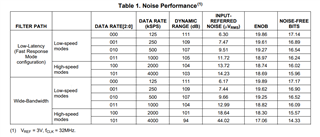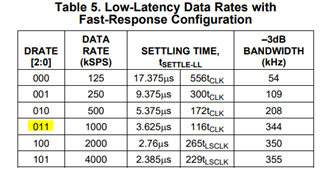It is not clear in the datasheet but could you please confirm:
| Data Rate | Min f_clk |
| 4 MSPS | 32 Mhz |
| 2 MSPS | 16 Mhz |
| 1 MSPS | 8 Mhz |
I have configured the ADS1675 for CMOS and therefore I am limited to 1 MSPS.
I understand that that the min/max specs for the ADS1675 is for 32 Mhz, but are there any major disadvantages to using an 8 Mhz clock vs a 32 Mhz clock?




